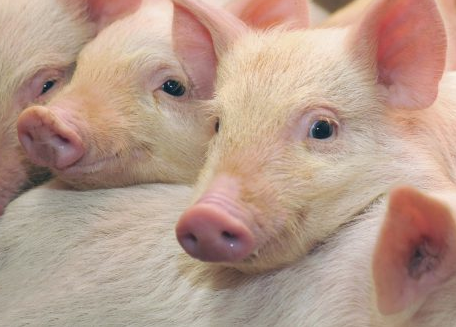 Russian Agricultural Bank JSC (the Omsk branch is Omsky Biocluster member) presented an expert vision of the development points of the pig sector at the international conference 'Pig Production 2019', dedicated to finding answers to the global challenges of the industry. According to the RusAg's forecast, a decrease in prices and an increase in prime cost by 5% in 2019 will lead to a decrease in the pork production margin from RUR 35 per kg to RUR 25 per kg ($ 0.55 - 0.39). In 2020, the marginality may be reduced even more - up to RUR 20 per kg ($ 0.31).
Russian Agricultural Bank JSC (the Omsk branch is Omsky Biocluster member) presented an expert vision of the development points of the pig sector at the international conference 'Pig Production 2019', dedicated to finding answers to the global challenges of the industry. According to the RusAg's forecast, a decrease in prices and an increase in prime cost by 5% in 2019 will lead to a decrease in the pork production margin from RUR 35 per kg to RUR 25 per kg ($ 0.55 - 0.39). In 2020, the marginality may be reduced even more - up to RUR 20 per kg ($ 0.31).
"The key reason for reducing the industry's profitability is a 7% decrease in selling prices for pork, caused by a supersaturation of the domestic market. However, despite the pork supply surplus, the potential remains for commissioning new capacities by existing producers to meet consumer demand for chilled meat in the Siberian and Far Eastern Federal Districts. Across the Urals, the pork production margin is on average 33% higher than in central Russia. According to the RusAg, the total capacity commissioning capacity in the Siberian Federal District and Far Eastern Federal District is 145,000 tons in live weight," said Dmitry Zhilyakov, Managing Director of the Strategic Development Department of the Russian Agricultural Bank.
The expert explained that 94% of the production capacity of the 20 largest companies is concentrated in the European part of Russia, and the demand in this region is fully satisfied due to overconcentration in Central Russia. At the same time, pork producers from Central Russia are facing increased feed costs due to their proximity to major grain export channels. The remoteness of the regions of the Siberian Federal District and the Far Eastern Federal District provides lower cost and high selling prices against the background of low competition - these are the factors that create favorable conditions for the development of this direction outside the Urals.
"In the medium term, the vertical integration of the leading industry players is expected to be completed, as the companies with the technological chain from field to counter will have the highest margins. In the long term, the financial stability of pork producers will depend on export growth," concluded Dmitry Zhilyakov.
Russia is one of the first seven pork producing countries. In 2019, supplies of Russian pork abroad are expected to grow by 20% and exceed 100,000 tons, in the long term, exports may exceed 400,000-500,000 tons. China, Vietnam, South Korea, and Japan stand out among promising markets for domestic pork.
Source: kvedomosti.ru.

